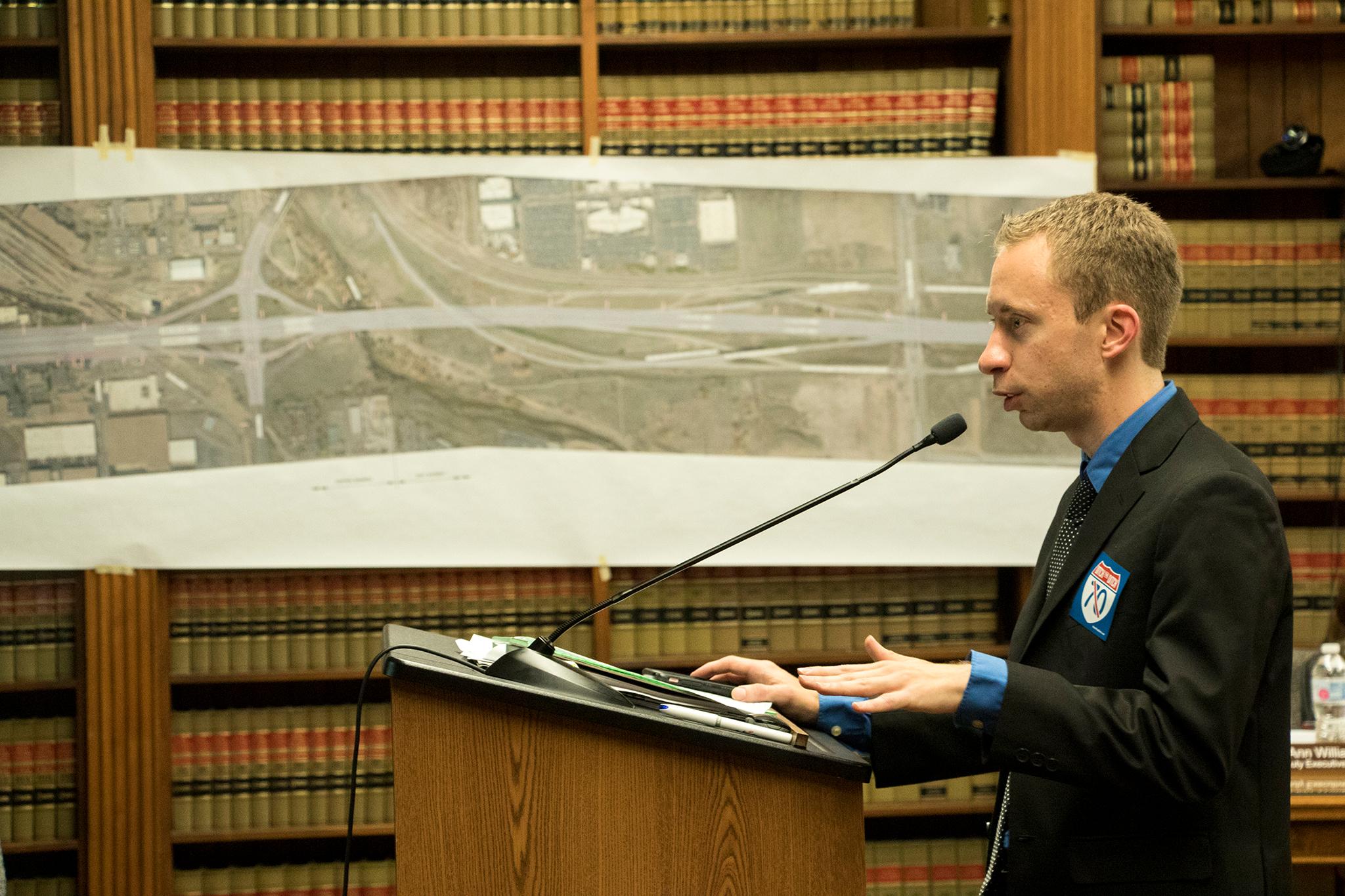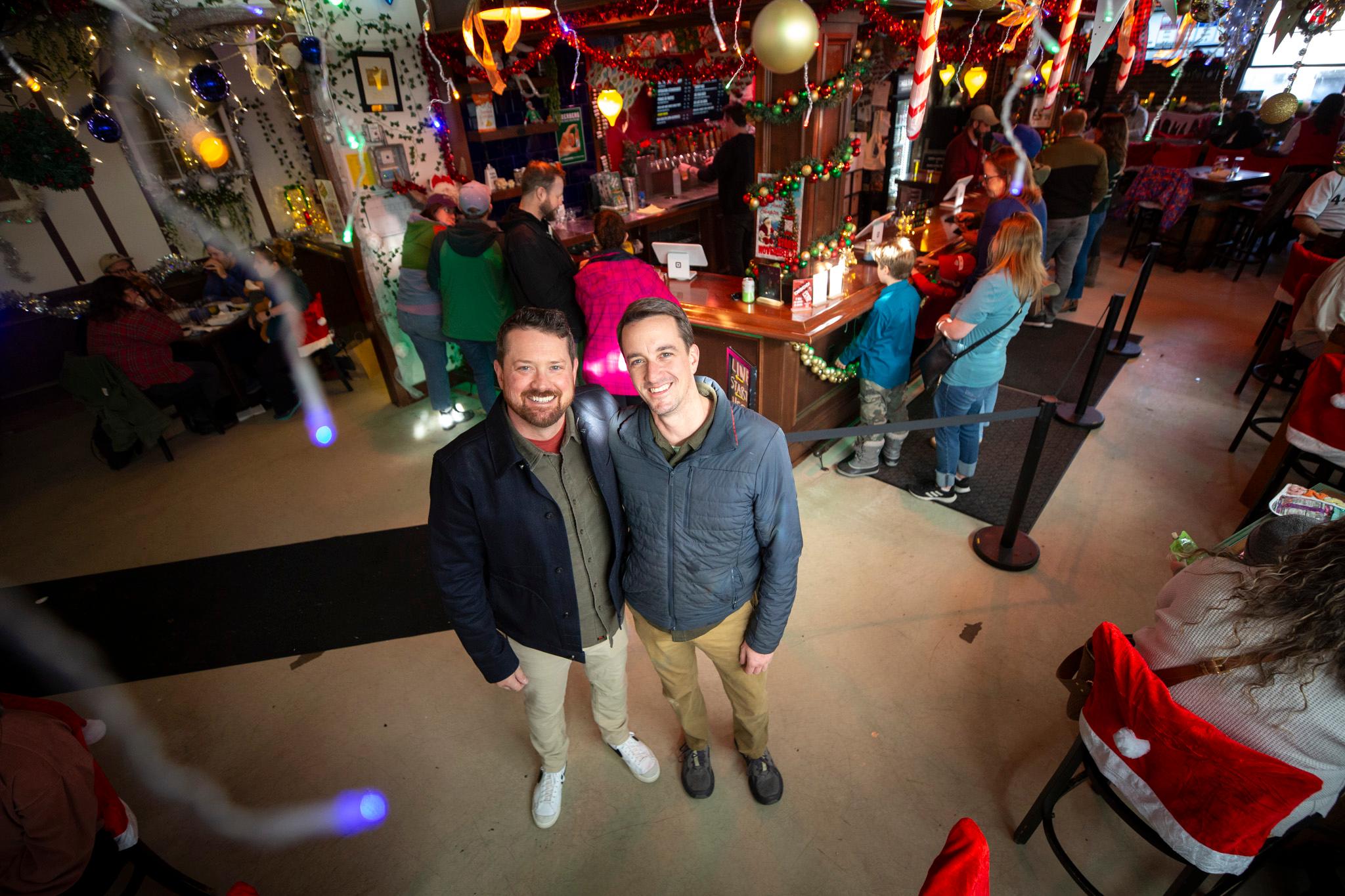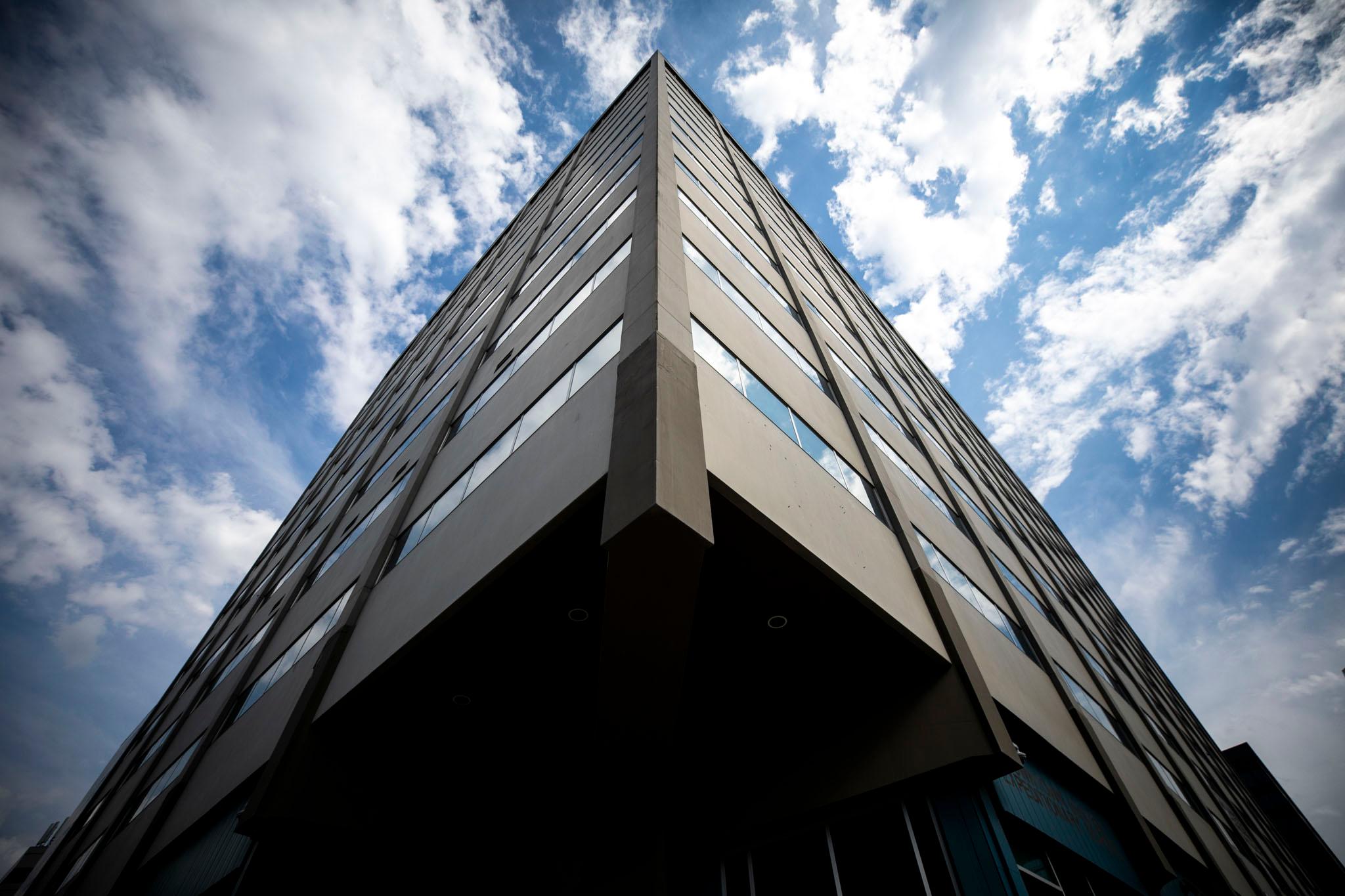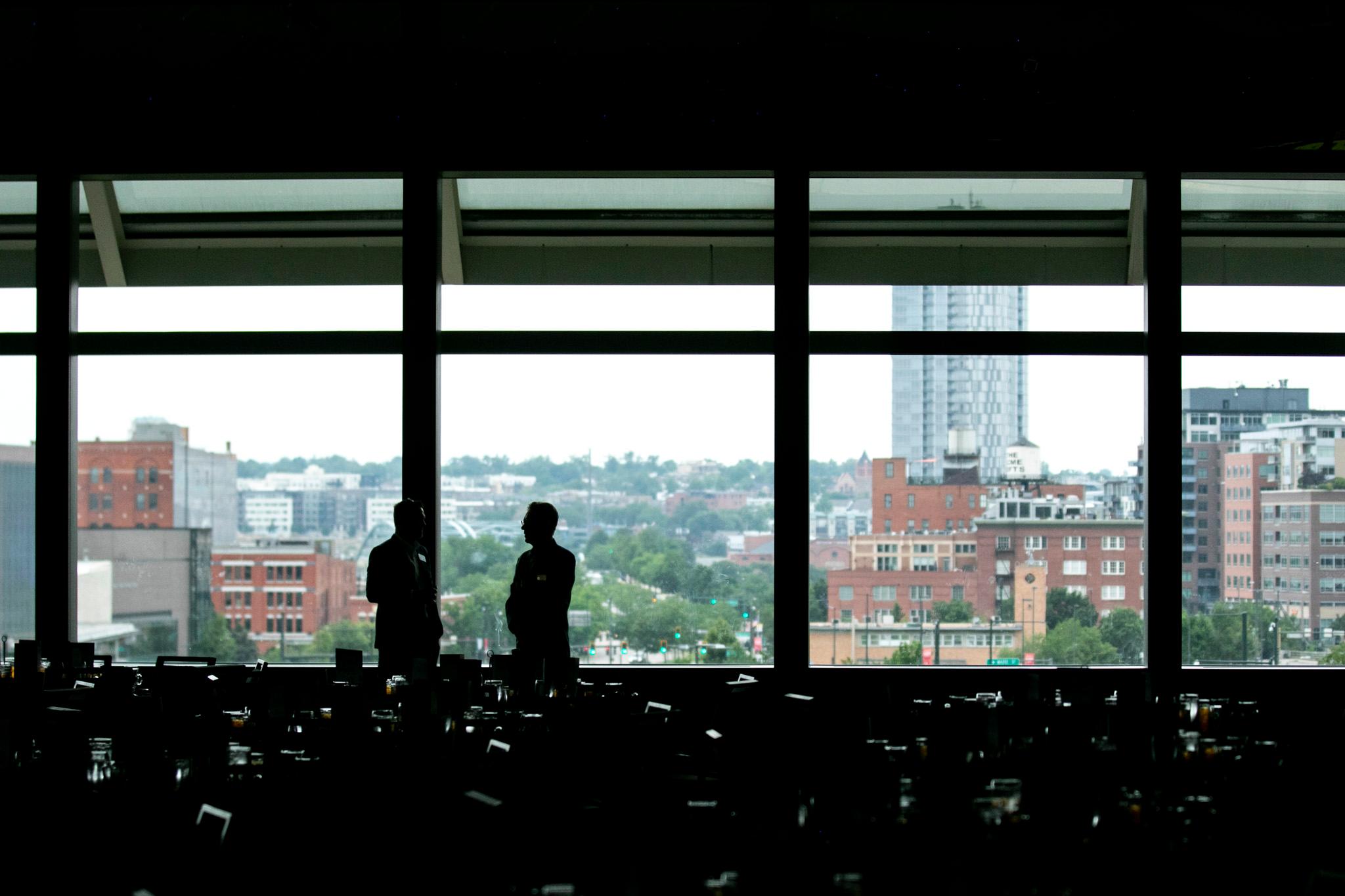It’s about to get loud in Elyria-Swansea.
On Thursday night, the Denver Board of Public Health and Environment held a special meeting to weigh whether or not four years of construction on I-70 through Elyria-Swansea could be significantly louder than is usually legal. The seven-hour hearing and deliberation saw the City and County Building’s Parr-Widener room filled, at least at the start, and close to 50 people signed up to testify on the matter.
The night ended at 1 a.m. with a slight compromise. A variance passed in a 3-2 vote; it wasn’t the one that the contractor, Kiewit, wrote, but it was close.
For normal construction, Kiewit will be allowed to make noise with no limit during daytime hours. At night, they’ll be allowed to make noise up to an 86-decibel peak or a 75-decibel hourly average, as measured at the edge of the yard of the closest home. That’s comparable to the limits for large outdoor music festivals like Denver’s Underground Music Showcase, though this would be for 20 hours a day, 5 days a week, and doesn’t count shorter demolition periods that are allowed to be even noisier.
While those levels were what the Kiewit proposed, the board passed a slightly stricter version of the variance raised by the Denver Department of Public Health and Environment (DDPHE). That version requires stricter reporting of complaints and expands the geographic area for who gets assistance to go to a hotel during those times when sections of the viaduct will be demolished. The community also managed to add one provision: instead of lasting until 2022, the variance will have to be renewed after one year.
Representatives from Kiewit and DDPHE both agreed that nighttime construction is necessary.
Tom Howell, area manager for Kiewit, argued construction after dark is necessary for the project to finish in a timely manner; they’ll work around the clock and say they need to perform their heaviest operations when there’s less activity nearby.
Danica Lee, a division director with DDPHE, also said nighttime work is necessary. While the project’s timelines played into that decision, she said they had a mandate to protect public health. Allowing work all night means construction vehicles won’t idle near daytime populations, construction workers won’t work near busy traffic and side streets won’t become overly congested.
“The Department of Public Health and Environment is recommending the approval of a variance,” she said, although the department did not agree lock-step with Kiewit.
Lee said DDPHE wants the contractor to deliver more data collection on complaints than is spelled out in their variance request. Their proposal would require weekly reports that provide both numbers of complaints as well as the content of those complaints to city agencies. The Board of Public Health and Environment could access and use that information to determine if the variance needs to be revoked.
They also want to see room for more “eligibility zones,” a label Kiewit has given for areas affected by intense noise pollution when they tear the viaduct down. Residents in those areas, which are determined ahead of construction by calculated modeling, would be eligible for vouchers to stay at hotels during the loudest times. Kiewit’s proposal only allows for families to be relocated to hotels during what Howell referred to as “major construction activity,” mainly viaduct demolition nights. Lee said her agency wants to see opportunity for eligibility zones outside of those peak actions.
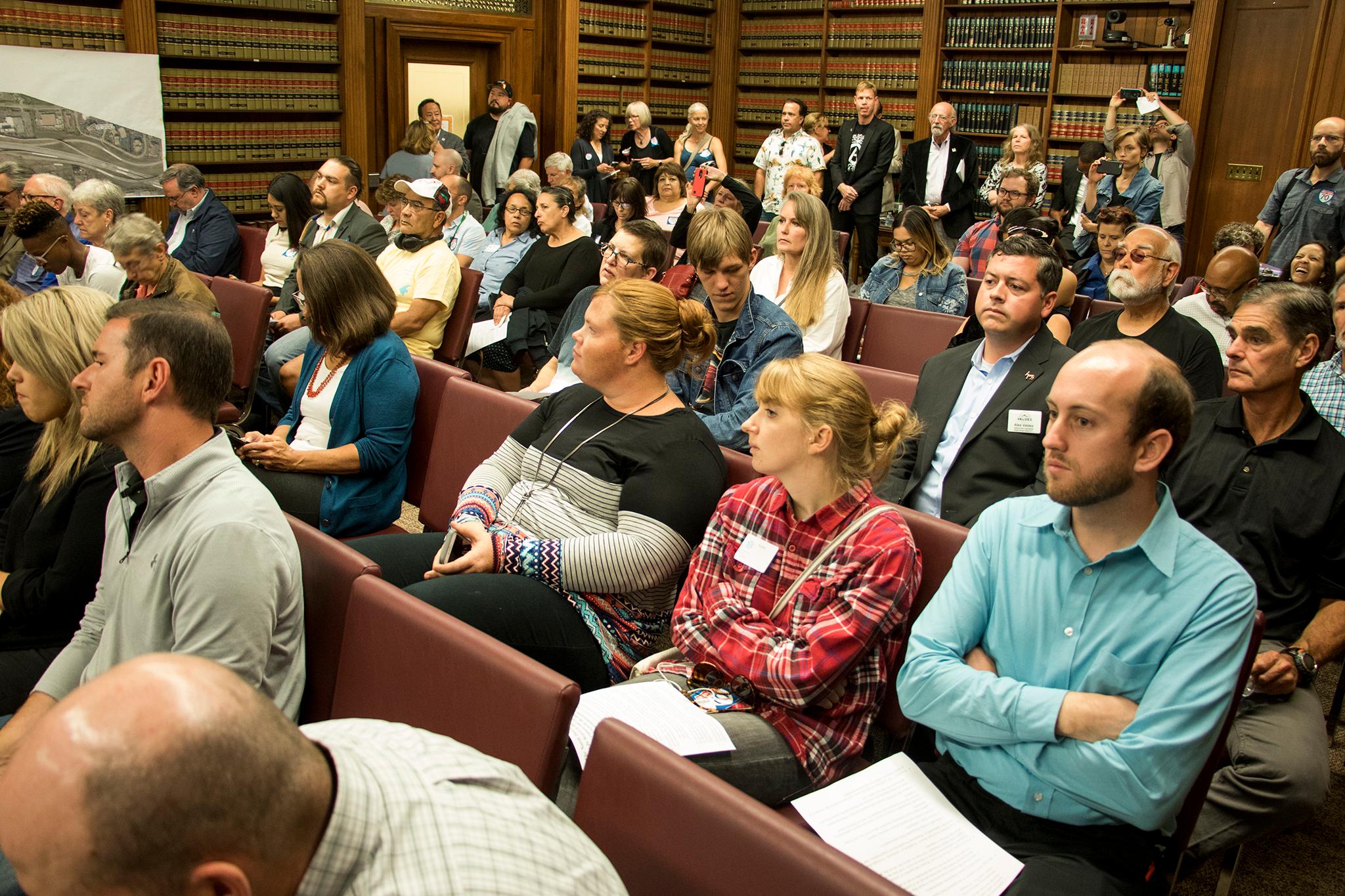
Residents who showed up to speak agreed they hated both Kiewit’s and DDPHE’s proposals.
Not a single public comment was made in favor of either plan. Even Councilman Albus Brooks and activist Candi CdeBaca, who will eventually have to campaign against each other for Brooks’ seat and have traditionally been at odds, seemed to agree that another solution needed to be worked out.
The line began with Joel Minor, an attorney with Earthjustice, who spoke on behalf of four other community groups who submitted an edited version of Kiewit’s variance request. Their plan wouldn’t have increased maximums and would require even more intense reporting and consequences for breaching maximums. But what eventually resonated in that document was a request to limit the variance from four years to one year. If Kiewit wanted to keep their higher noise levels after 12 months, they’d have to seek new approval from the board.

Brooks, who released a joint statement with Councilwoman At-large Debbie Ortega, also asked the board to consider limiting the variance to one year.
And then there was the procession of loud, impassioned pleas from community members.
“We’re going to be sacrificing the people of Globeville and Elyria Swansea,” said Nola Miguel, a local community organizer. She said neighbors have never had any power to influence the construction process.
Gabriel Thorn, a former army Major who ran unsuccessfully this year for the State House, said the military uses sound, including sounds of construction sites, as a weapon on the battlefield: “Three days of blasting noise at insurgents usually gets them to surrender.”
Eric Keitzer, who lives and works in Elyria-Swansea, asked if he’d be reimbursed for losing peace and quiet in his home office. His wife, Vanessa, said, “Our health is already being stomped all over in this neighborhood.”
A dissent from Colorado Speaker of the House Crisanta Duran was also read during public comment.
“I am writing to urge you to deny the noise variance request,” her statement said. “The neighborhoods named above are among the most historically underserved in the metro area, while also predominantly housing low-income families and people of color.”
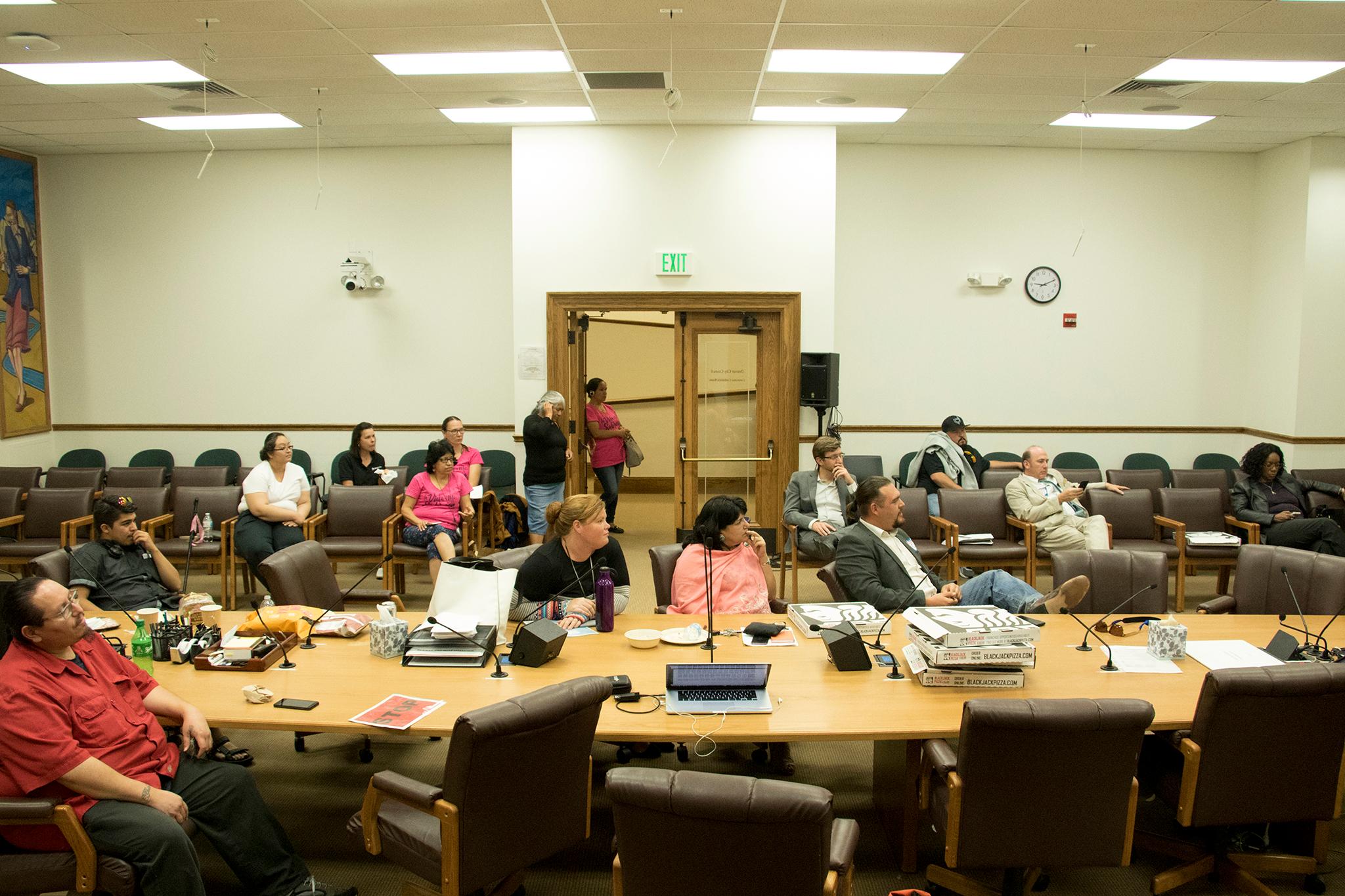
In the end, a close vote left community members disappointed.
Denver Board of Public Health and Environment member Genene Duran led objections against the plan. She raised numerous points, many of which were rooted in the community’s overall vulnerability. But her first comment introduced the year-long limit on Kiewit’s request.
“The time frame is much too long,” she said.
Board member Chris Wiant said he understood why she and the community were concerned, but he said he had faith in city staff to make sure the neighborhood was taken care of.
“I do have to say that we — I, at least — believe our … staff understands exactly what is at stake,” he said.
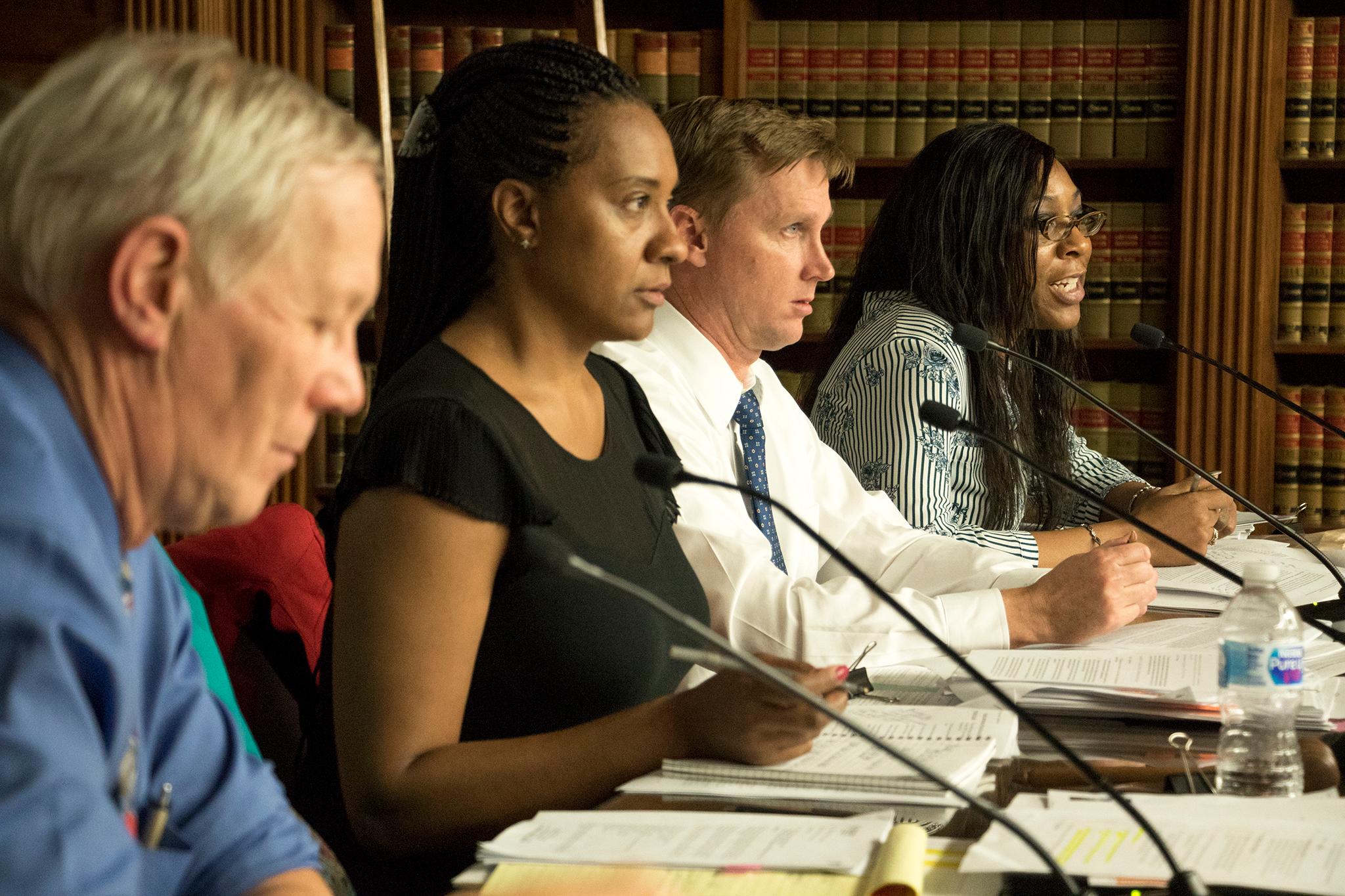
After several motions were introduced and then rescinded, the board finally approved DDPHE’s original plan, with the caveat that it would be limited to one year.
Duran and Board Chair Alisha Brown, both women of color, were the sole “nays.”
As the crowd of disappointed community members filed out of the room, CdeBaca announced to those still left inside: “I just want to point out that the vote came down along both gender and racial lines.”

